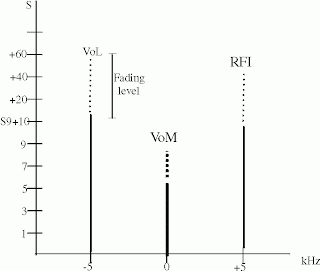Klingenfuss utility guide 1999
Klingenfuss utility guide 1999
And once again something different
YOU surely know that I am a keen radio listener. However you possibly don’t know that the older times I was also a keen listener of utility radio stations! That happened on mid 90s to mid 00’s . and more interested during the time of the war in Serbia.
I was using a Philips 2395 radio (having BFO to tune ) together with a Spectrum micro computer and an interface connected on the rear of Spectrum that did the decoding of various digital transmissions of that time .
What is utility radio station? This kind of station is a transmission normally not intended to the general public as the transmissions are aimed to communications.
These’re the following categories
UC 1: Time Signal Stations, Space Stations and the Aero Section
UC 2: PTP Stations
UC 3: Maritime Stations
UC 4: Military
UC 5: Government Stations and various other stations
Standard radio stations (like voice of America , BBC etc ) cover less than the one third if this radio spectrum while remain spectrum is used solely to these communications services
This book is intended to those interested in this specialized and very exciting hobby . As far I know Klingenfiuss is one of the oldest (?) publishers (since 60s )in this category with many books in mind
I am now going into the structure of this book
This book contains about 600 pages with relatively thick paper of one inch thickness.
The first part contains some interesting introductory material and the status of monitoring utilities . (for example several countries prohibit listening ). References to publications from ICAO ,ITU WHO and other international organizations including several persons who contributed to make this book being published .
-Types of radio services included : aero meteo beacons broadcast feeders ships diplomatic services intelligence services Interpol press agencies UNO aero mobile maritime mobile freq and time services
-Modulation types : SSB , CW (standard morse ), radio fax , radio teletype RTTY (or radio telex) and all related encoding systems as ARQ , FEC etc (that time there were about 43 encoding systems )
-equipment and what extra is required (as for example a communications receiver is surely required with SSB and CW at least ) the extra ca be a dedicated reader to cope
- series of radio regulations
Ca 300 pages of freq lists . This includes a tabled format with 4 columns : freq , ID station , mod type (CW SSB and in the case of RTTY the encoding )or any other remarks 11600 freqs from 1500 stations
All frequencies and stations have been thoroughly monitored via Klingenfuss own monitoring facilities in Tubingen or via his contributors over the world and on special DXpeditions !
Alphabetical listing by country including all services addresses .with a funny PRC is referred as Communist Undemocratic China and same is referred to the North Korea . Obviously he puts his political thoughts in this book
3rd part includes more interesting information as :
- Stations IDs and ITU’s radio regulation
- Call sign formation possibilities
- NATO routing indications
- call signs by country
- radio fax and radio telex schedules
- navtex (navigation ) on 518 kHz
- screenshots from their monitoring work
- Full Q code (standardized collection of three-letter message encodings also can be found here http://www.kloth.net/radio/qcodes.php )
- Full Z code (also can be found here http://www.kloth.net/radio/zcodes.php)
- Phonetic codes for alphabet and figures (as alpha for A or lima for L )
- SINPO/SINPFEMO code (a code used to describe the quality of radio transmissions)
- Emission codes codes to describe the transmission and its parameters (full here http://www.ominous-valve.com/emission.txt)
- Class of stations and nature of service
- Definitions also radio regulations
- aero mobile services and freq allotment plan
- abbreviations (more a than 35 pages !)
And on on the end many pages with all products of this publisher . Except the books he sells a special inverted V antenna , and the WAVECOM digital decoder series (required to decode the various teletype encodings)
This book is surely one very interesting and useful



Comments
Post a Comment